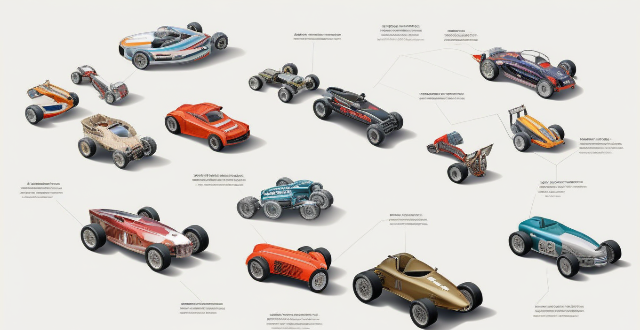The automotive culture is multifaceted, encompassing various dimensions such as the historical evolution of automobiles, technological advancements in safety and performance, aesthetic considerations, racing events, social implications of car ownership, and environmental concerns. The history section delves into the origins of the first gasoline-powered vehicles, the advent of mass production techniques, and stylistic changes over time. Technological innovations include improvements in engine efficiency, safety features, and advanced infotainment systems. Performance aspects discuss high-performance sports cars, prestigious racing events, and the tuning culture for enhanced vehicle capabilities. Design elements focus on exterior and interior aesthetics, customization options, and personalization trends. Social phenomena consider how cars serve as status symbols, cultural icons, and community builders. Lastly, environmental impact highlights the rise of electric and hybrid vehicles, sustainability efforts by manufacturers, and the overall push toward eco-friendliness within the automotive industry.

Key Elements of Automotive Culture
Automotive culture is a broad term that encompasses various aspects related to automobiles, including their design, history, technology, and the social phenomena surrounding them. Here are some key elements of automotive culture:
1. History and Evolution
The history of automobiles is a crucial part of automotive culture. It includes the development of the first cars, the evolution of different car models, and significant milestones in the industry.
- Early Cars: The first gasoline-powered vehicle was invented in 1885 by Karl Benz.
- Mass Production: Henry Ford's introduction of the assembly line in 1913 revolutionized car manufacturing.
- Design Evolution: From boxy shapes to sleek designs, car aesthetics have evolved over time.
2. Technology and Innovation
Technology plays a central role in shaping automotive culture. Advancements in engineering and electronics have led to improvements in performance, safety, and efficiency.
- Engine Technology: From internal combustion engines to electric motors, engine technology has come a long way.
- Safety Features: Airbags, anti-lock brakes, and electronic stability control are just some of the safety features developed over time.
- Infotainment Systems: Modern cars often feature advanced infotainment systems with connectivity options like Bluetooth, Wi-Fi, and smartphone integration.
3. Performance and Racing
Performance is a key aspect of automotive culture, with many enthusiasts focusing on speed, acceleration, and handling.
- Sports Cars: High-performance sports cars like the Porsche 911 or Chevrolet Corvette are popular among enthusiasts.
- Racing Events: Formula 1, NASCAR, and Le Mans are just some of the prestigious racing events that attract fans worldwide.
- Tuning Culture: Many car owners modify their vehicles for better performance or appearance, known as tuning or customizing.
4. Design and Aesthetics
The visual appeal of cars is another essential element of automotive culture. This includes both exterior and interior design.
- Exterior Design: Styling cues like grilles, headlights, and body lines contribute to a car's overall look.
- Interior Comfort: Luxury materials, ergonomic design, and advanced tech features enhance the driving experience.
- Customization: Personalizing cars with paint jobs, decals, or unique accessories is a way for owners to express their individuality.
5. Social Phenomena
Cars have become more than just transportation; they represent status, personal identity, and cultural symbols.
- Status Symbols: Luxury brands like Mercedes-Benz and BMW are often associated with wealth and success.
- Cultural Icons: Some cars, like the Volkswagen Beetle or Ford Mustang, have become cultural icons over time.
- Community Building: Enthusiast groups organize meets, shows, and clubs centered around specific car models or interests.
6. Environmental Impact
As awareness about environmental issues grows, so does the focus on eco-friendly vehicles within automotive culture.
- Electric Vehicles (EVs): Tesla pioneered modern electric vehicles, but now many traditional automakers also offer EV models.
- Hybrid Technology: Hybrid vehicles combine gasoline engines with electric motors for better fuel efficiency.
- Sustainability Efforts: Automakers are working on reducing carbon footprints through sustainable production methods and recycling programs.